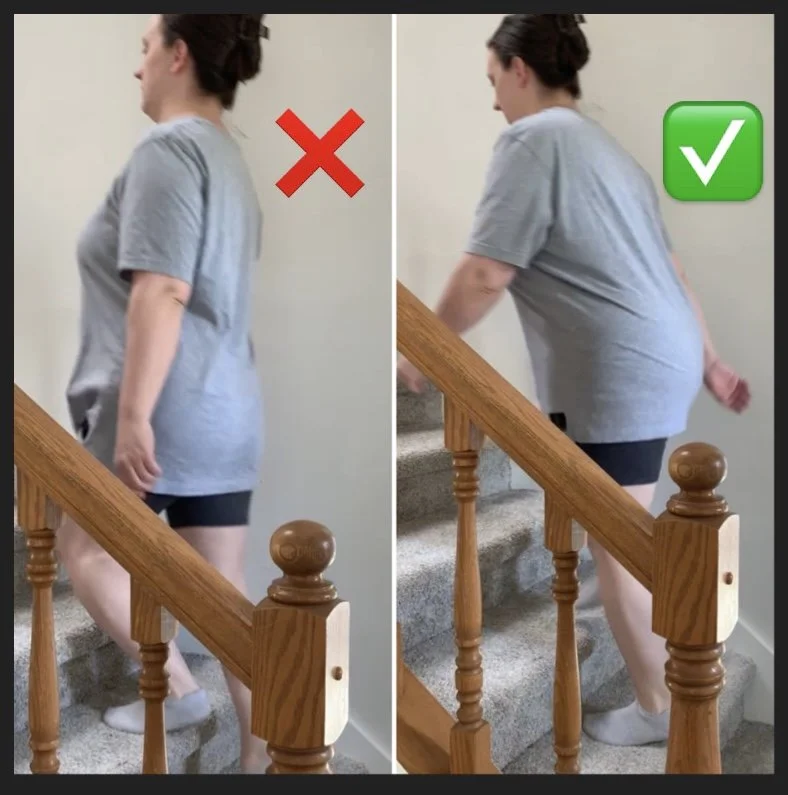Reduce Pelvic Floor Symptoms: Part 1
There is a common misconception that you must be 100% free of pelvic floor symptoms in order to exercise, play sports, or generally be an active person.
I disagree.
For many individuals, movement is actually going to reduce their pelvic floor (PF) symptoms, especially long term. 👏
It’s all about finding movements that work with the body in that moment – because even different times of the day, phases of a menstrual cycle, or what the person is wearing can impact PF symptoms.
And!! You also don't need to implement a 10 step plan before every workout or activity in order to prevent said PF symptoms.
There are small tweaks you can make in your everyday life, during workouts and even after activity that can relieve and or prevent PF symptoms!
Best of all? These small tweaks and habits don't take up all your time or brain space. 💥
Over the next two posts we’ll be going over a few of my favorite ways to reduce PF symptoms during exercise.
First, let’s talk about the forward lean.
The forward lean means shifting the upper body forward at the hips. So instead of being straight up and down in a lunge, running, climbing the stairs, etc, we can shift our weight forward (from the hips/base of the spine) and this has worked wonders for myself and for clients.
Here’s a few visuals for you:
Running or Sprinting
Notice how much better my stride looks in general just by shifting the torso forward.
Lunges & Split Squats
Hinge forward as you drop down or step back.
Back lunges done in this way can be a great replacement for a double leg squat if you’re having any pain in your low back.
Stair Climbing
Lean forward as you climb up stairs. Bonus points for placing your entire foot on the stair and pressing through your heel as you walk up.
Second, let’s talk about rotation.
Specifically, rotation through the ribs and shoulders.
When we run, when we walk, when we’re moving through life – there should be a natural rotation (side to side) through the rib cage.
Ok sure, but what does that have to do with my pelvic floor?!
Our rib cage houses the lungs and the respiratory (breathing) diaphragm, which just so happens to work together with the pelvic diaphragm (pelvic floor). When our upper body is rotating (moving) well, our pelvic floor tends to move well.
If you've worked with me before, you know that we work on lengthening the pelvic floor by taking a long, slow inhale breath, focusing on expanding through…you guessed it, the rib cage!
So why do we lose the rotation?
Different events in life, such as pregnancy, can create more tension in this part of our body and make it difficult to rotate. Then we sit in a chair nursing our baby for 500 hours a day and we continue to not rotate. We start making new patterns in our body.
The same can be true of certain sports, occupations or habits – if we keep not rotating, it will be more and more difficult to rotate without thinking about it. We build up tension in the upper body, we build up tension in the pelvic floor.
Of course there's nuance to this, but in general, if you're upper body is rotating well, your pelvic floor will be/can be moving well, as well!
So next time you’re on a walk, try rotating. Let your arms swing, let your rib cage rotate side to side. If you’re pushing a stroller, try using one arm instead of two.
If you enjoy running, check in with your body next time you’re on a run. Do you allow your upper body to naturally rotate side to side with each stride? Or are you holding tension through the area, keeping everything facing forward the entire time?
Just like with the forward lean, you don’t need to have pelvic floor symptoms in order to find these tweaks helpful. Allow your upper body to rotate freely with movement throughout the day and I bet you’ll start to notice when you’re holding tension and fighting this natural tendency.
Give these two a try and see how it works for your body. Even if you’re not experiencing any PF symptoms, you may like how this feels anyway!
And remember that perfection is never the goal, rather improvement and having more ease with movement.



